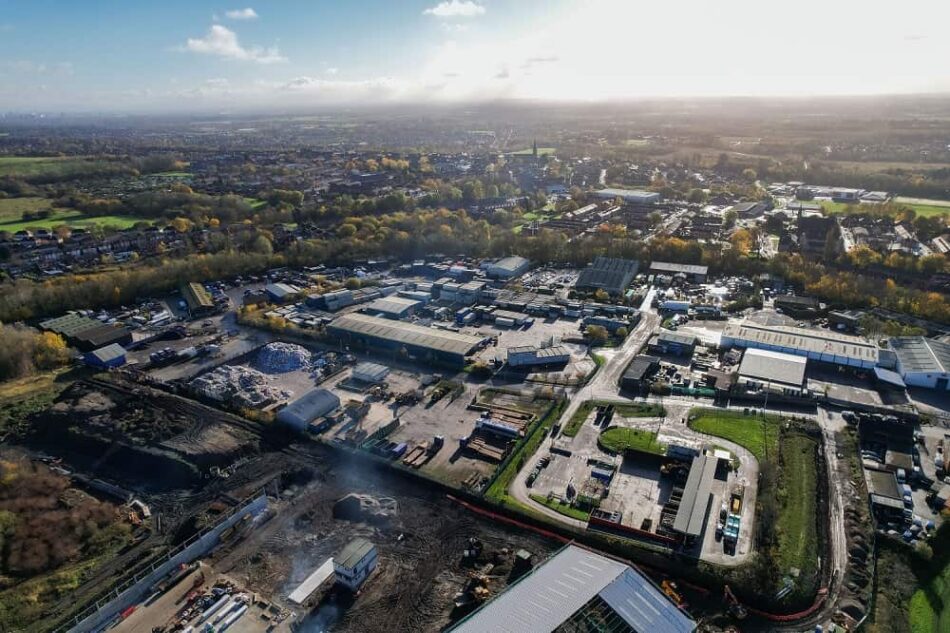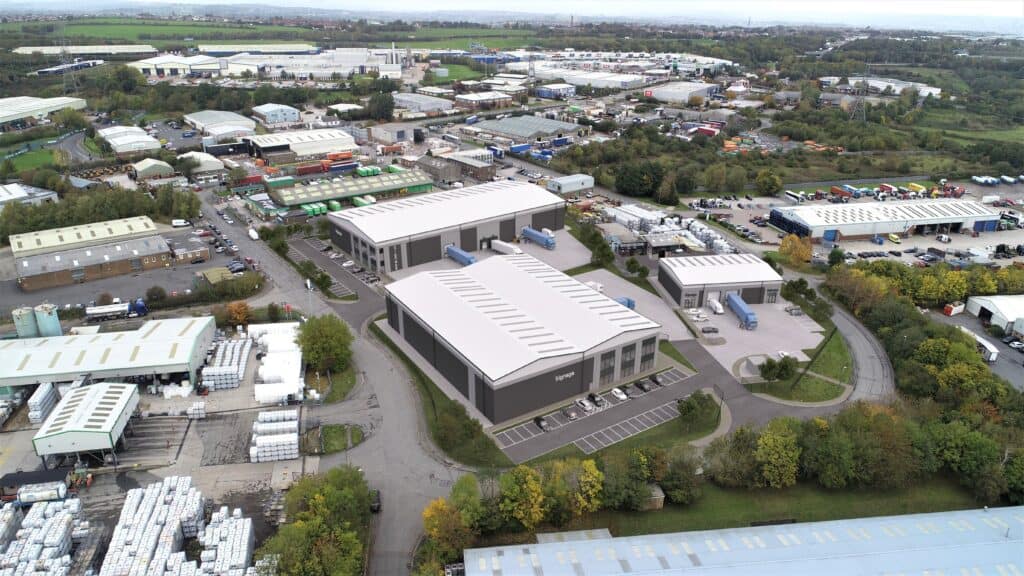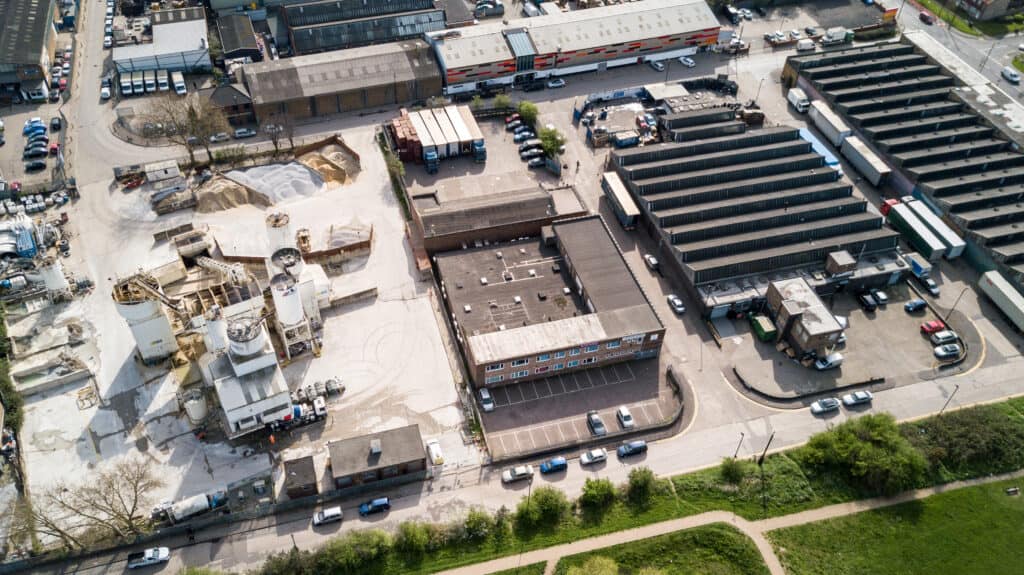
FIVE CLIMATE ISSUES THE INDUSTRIAL AND LOGISTICS SECTOR SHOULD BE TALKING ABOUT
Last week we held a breakfast session with people working in the industrial and logistics sector to discuss the pressing issues facing the sector, particularly when it comes to the climate crisis.
It gave us the chance to discuss how we are all working to reduce our environmental impact, particularly in finding the low hanging fruit that can take the logistics and industrial property sector towards net zero.
We need a holistic approach
Whilst our focus is to advise our clients how to navigate the planning system, it’s clear that the planning system can only play a small role in fixing a much wider sustainability problem.
Planners can enforce stringent BREEAM or Biodiversity Net Gain measures to keep the construction phase accountable, but what happens during the operational phase? Even developers with the best intentions cannot control how their building is occupied over its lifetime.
Government plays a key role in setting the parameters within which the development industry must function, whether that’s at the planning stage or beyond. At every level of governance, we need critical thinkers who can see and appreciate the whole problem.
We need less bureaucracy, not more. And leaders who take a holistic and pragmatic approach to the climate crisis.
We must acknowledge the differing local and global priorities
COP26 made it perfectly clear that the climate crisis is a global one, albeit felt at a local level.
When it comes to reducing our climate impact, whether that’s through building methods, choice of materials, renewable energy or new technologies, we are confronted with the choice to either take a local focus or a global one.
For us in the UK, the question arises, how should we focus our efforts?
Should a developer fund on-site tree planting which brings other benefits to wildlife and the local community, or would the climate challenge be better met through funding tree planting in the Amazon rainforest where a global benefit can be seen sooner?
Tree planting in the tropics is a more efficient way of addressing carbon emissions than UK-based planting programmes. They grow faster and can start sequestering carbon dioxide more quickly.
Sarah Chicken, Tritax Symmetry
This would support the case for using carbon credits to offset schemes that carry an inherent carbon load. Carbon credits will never be the whole solution, of course, but compensating for the emissions we cannot prevent today will, as the Global Green Building Council points out, accelerate the decarbonisation agenda.
The challenge is to balance these competing pressures, and it is a challenge that local planning authorities must help tackle. Could carbon credits become a legitimate material consideration for planning applications?
Repurposing and building new each bring different challenges
We work with organisations that follow both approaches: repurposing older industrial buildings and building from scratch.
THE CHALLENGES OF REPURPOSING
Repurposing buildings is inherently sustainable. And yet, with challenging Energy Performance Certificate criteria to meet, it can still be less sustainable. Industrial buildings are notoriously difficult to make energy efficient because of their scale and large hatch-door openings.
It is sometimes easier to achieve the requisite EPC ratings by knocking an old building down and starting again. As Stephen Chicken of SCPi highlighted, we may witness history repeating itself, just as the government’s Empty Building Rates initiative led to buildings being demolished to avoid the new charge.
This observation was reflective of Andrew Pexton of JLL’s experience, who added that tenant strategies are more regularly being devised to work in breaks around EPC upgrade requirements.
THE CHALLENGES OF BUILDING FROM SCRATCH
When it comes to building new, choosing the right building materials isn’t as simple as you might think. Timber might seem like an obvious solution, but it can cost just as much as steel and requires more to make it structurally sound.
And before you even think about materials, you’ve got to find suitable land. For logistics operators it’s absolutely critical to be positioned in a sustainable location close to transport hubs, not only for efficient operations but to reduce traffic emissions. The benefits of a modern, energy-efficient building are negated if it’s located in a less-than-sustainable location.
Energy efficiencies are a genuine issue for even the most modern warehouse – cavernous spaces with constantly open hatches do not stay warm for long and the more sustainable approach may be not to heat them at all.
We must embrace flexibility
A common feature of the industrial and logistics sector is building speculatively, with the aim of attracting a tenant from as wide a pool as possible. For this reason, developers are keen to market a flexible site, as unconstrained as possible.
This is an opportunity from an environmental perspective too.
Maintaining as much flexibility as possible in terms of the technological infrastructure installed on a site means that technological advances aren’t missed whilst a tenant is found. Once a tenant is secured, the most up-to-date EV or photovoltaic technology can be connected to the sub-ground infrastructure that’s already in place.
Planning departments across the board need to accept that installing the infrastructure but not the end product is a good way to make positive eco steps for the logistics sector and to ensure flexibility for future occupants.
Common sense is crucial
And finally, but critically, a ‘common sense’ approach is crucial.
There is no point in striving to achieve arbitrary metrics such as the EPC if that leads to perfectly useable buildings getting demolished.
An ingrained development control mindset of ‘how can we control this?’ leads to delays caused by lengthy negotiations over relatively inconsequential issues (such as the colour of cladding). Is this the way we will effect valuable change that matters?
We would encourage all planning officers to help the industry by looking for sensible solutions rather than problems. We need a fundamental shift towards a ‘common sense culture’ in planning which sees the bigger picture.

NO SINGLE SOLUTION
As we ate our breakfast and enjoyed our debate, we couldn’t help but notice that we, ourselves, were in a converted warehouse, built 150 years ago and repurposed many times in its history.
How sustainable was this building? Its position right next to Piccadilly Station and the Rochdale Canal basin was no coincidence. Locating warehouses in highly sustainable locations has always been a top priority.
Brick is not an inherently sustainable building material. But then again, it has stood the test of time and shows no signs of nearing the end of its life just yet.
What’s clear is that there will be no single solution to achieving net zero within the industrial and logistics sector.
Our thanks go to those that joined us to discuss this topic from Tritax Symmetry, JLL, SCPi and Mileway. There may be no simple solution but we’ll continue to engage in this discussion with them and others from the sector.
In fact, you can hear more of our insight this Thursday (12 May), when P4 Director Gillian Worden will be speaking at the Place North West Industrial and Logistics event.
